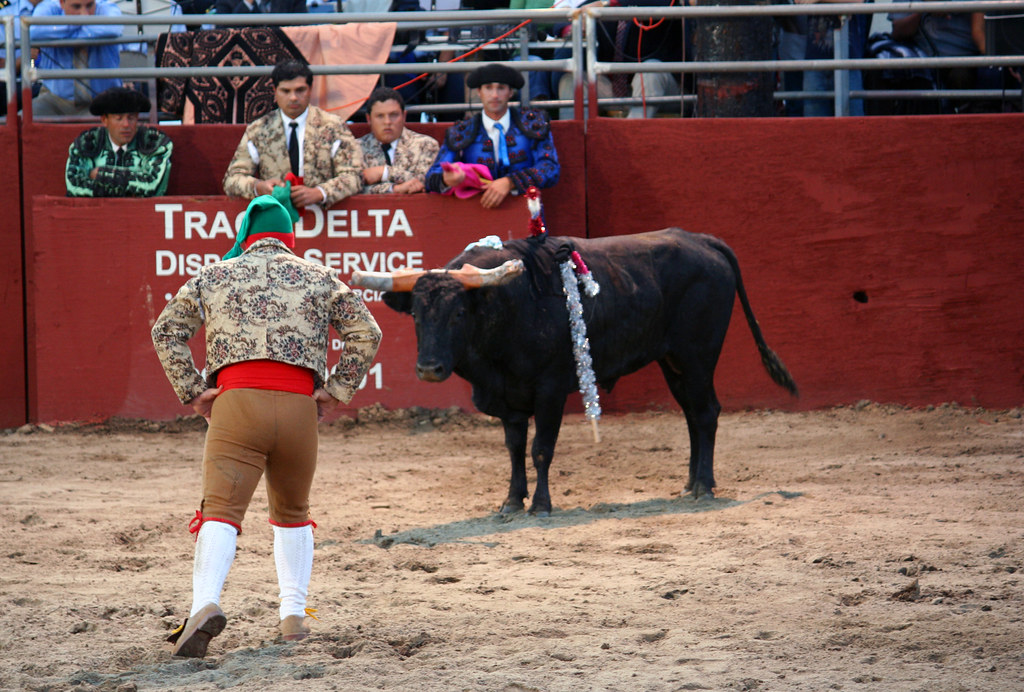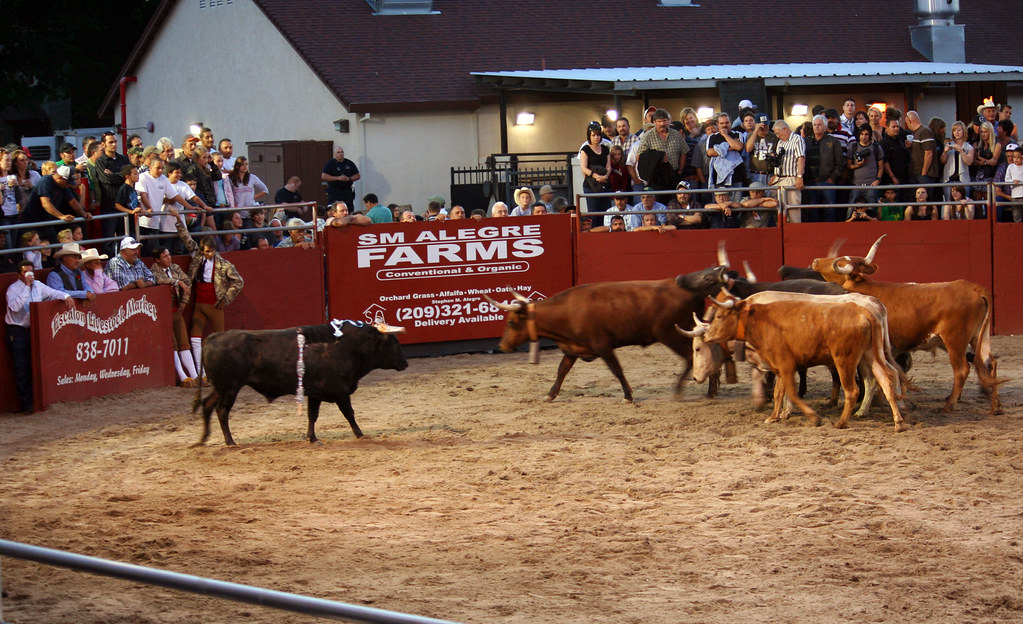 |
| Forcados in action |
In April, 2011, I attended my first "bloodless" bullfight in Stevinson, CA. I blogged about it here. The bullfight was part of the research for my second Grand Starr novel, Death of a Matador. It was about this time I conceived of another novel with the forcado group as main characters. I'm now in the process of writing that novel, working title The Young Bull Wrestlers.
I'm only about 8,000 words in and have begun writing a scene where the team is practicing at the main character's house in Hilmar, CA. This scene, and a similar scene in Death of a Matador, was inspired by an actual (man I hate that word) experience I had. A patient of mine was well known in the Portuguese (Azorean) community in the Hilmar-Stevinson area and arranged for me to have "back stage" access to the Amadores de Merced team of forcados, or bull wrestlers. I didn't know I'd have this kind of access and so wasn't prepared. I probably could have made more of it than I did.
As I've blogged before, it's important to me that my books be as "real" as possible, meaning I don't want to give a reader an opportunity to say "No way that could happen!" (Canals excepted; it's a horror/sci-fi novel). With this in mind, I've done some research on the basic technique or approach used by a team of forcados.
What Forcados Do
Forcados are called on to wrestle a bull into submission after it's been run around the arena for 15-20 minutes by a matador either on foot or on a horse, so the bull has been worn out to a degree. (Mind you, it still has plenty of energy and fury to run one of its horn through your gut!) At the two bullfights I attended, the horse and foot matadors did not whip up much excitement from the crowd, despite their great skill and artistry. People were talking and eating, trying to stay warm, texting or talking on a cell phone, drinking and laughing with friends, etc. My feeling is they've been to so many bullfights that the novelty is long gone.
But when the horns blow and the chosen eight leap over the wall and strut into the arena, the crowd comes alive. Cell phones drop into laps, children crowd the front of the stands to get a better view, and people quit yapping. (I never saw anyone set a beer down, though.)
The forcado's goal is to wrestle the bull into submission on the first try. From what I've gathered this means their front guy needs to have stayed on the bull's head until the bull has been subdued. If they fail they keep trying until they get it right. It took one team three tries to wrestle the last bull of the evening at one of my two bullfights. (The biggest and meanest bulls are, generally, saved for last.)
Positions
Eight members are chosen to fight each bull. (Some teams have over 20 members.) They are assigned specific positions that have specific tasks. They are as follows:
Position #1: Cara or Caras - "Faces the bull"
This is the guy that leads the team into the arena. His is the position of greatest risk and skill. His one goal is to jump on top of the bull's head, preferably between the horns, wrap his arms around the bull's neck, and hang on until the bull has been subdued.
When you watch my YouTube video I've linked to, you'll notice that #1 is backpedaling when the bull hits him. Obviously, this takes some of the oomph! out of bull's charge.
You should also notice that the #1 position requires some style and grace. He must show the bull that he's not afraid of it by his posturing and verbal taunting (which you can't hear on the video). He doesn't just run into the arena and start yelling at the bull.
#1 is aided by junior matadors who stand outside the wall and distract the bull with their brightly colored capas, or capes. The distraction allows #1 to get closer to the bull. Why? So the bull doesn't hit #1 after charging halfway across the arena. The closer #1 is to the bull, the less inertia the bull will have gained when they collide.
Observe the guy in the #1 position in the following three photos:
 |
| #1 is out there in front, by himself. |
 |
| He jumps on the bull's head. #2 is right behind him. |
 |
| He is hanging on for dear life. |
Position #2: Contra Caras - "First helper"
#2's main job is to see that #1 stays on the bull's head. If #1 is slipping off the front of the head, #2 tries to push him back up. If #1 is about to go over the bull's head onto his back, #2 tries to pull him forward. His roll is one of timing: he's got to get to #1 while the bull's head is down.
 |
| This #2 has moved to the opposite side of the bull. |
Numbers 3, 4, and 5 have entered the frame. 2 and 3 are there to...
We'll pick this up in my next post.







